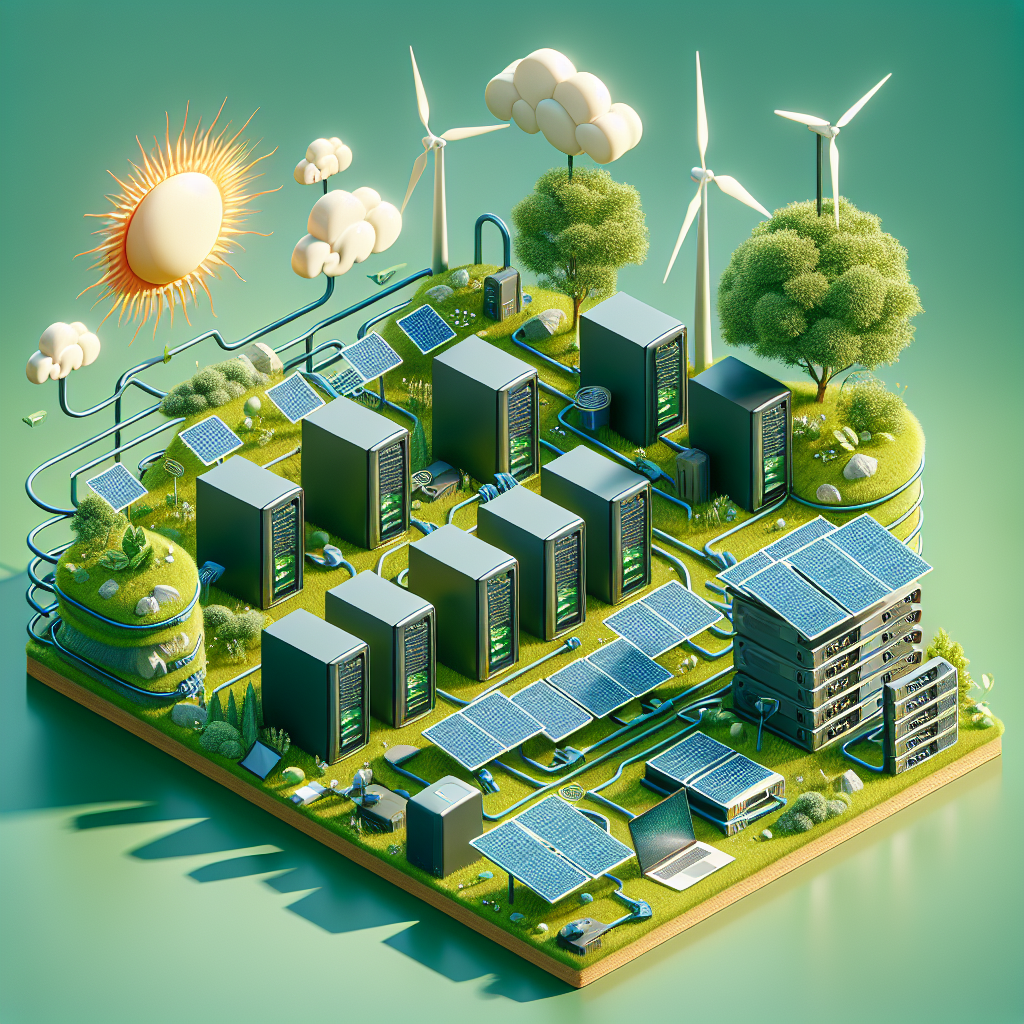Green Computing: How IT is Going Eco-Friendly
In the digital age, the information technology (IT) sector has become a cornerstone of the global economy, driving innovation and growth across numerous industries. However, this rapid expansion has come with a significant environmental cost, due to the high energy consumption and waste generation associated with computing activities. As awareness of climate change and environmental degradation increases, there is a growing movement within the IT industry towards green computing. This initiative seeks to minimize the ecological footprint of digital operations through the adoption of more sustainable practices and technologies.
Understanding Green Computing
Green computing, also known as green IT, refers to environmentally sustainable computing or IT. It encompasses a broad set of practices, strategies, and technologies aimed at designing, manufacturing, using, and disposing of computers, servers, and associated subsystems—such as monitors, printers, storage devices, and networking and communications systems—efficiently and effectively with minimal or no impact on the environment.
The Pillars of Green Computing
Green computing rests on several key principles: energy efficiency, reducing resource consumption, minimizing waste, and promoting recyclability. By focusing on these areas, organizations can significantly reduce their environmental impact while also achieving economic benefits through reduced operating costs.
Energy Efficiency
Data centers, which house the vast arrays of servers necessary to keep the digital world running, are notorious for their high energy consumption. Improving the energy efficiency of these facilities is a primary goal of green computing. This can be achieved through the use of more efficient hardware, advanced cooling technologies, and the implementation of software solutions that optimize resource allocation to reduce power consumption.
Reducing Resource Consumption
The production of IT equipment uses a substantial amount of resources, including rare metals and water. By designing products that are more durable and upgrading existing systems instead of replacing them, companies can significantly reduce their resource consumption. Modular designs that allow for easy upgrades and repairs can extend the lifespan of devices, decreasing the need for new materials.
Minimizing Waste
Electronic waste, or e-waste, is a rapidly growing environmental problem. Green computing initiatives aim to minimize this waste through recycling programs and by designing products that are easier to recycle. Additionally, reducing the use of hazardous materials in the manufacturing process can prevent environmental contamination when these products are eventually disposed of.
Promoting Recyclability
Ensuring that IT products can be easily recycled at the end of their lifecycle is crucial. This involves designing products in a way that parts can be easily separated and reused or recycled, and choosing materials that can be efficiently processed by recycling facilities.
Implementing Green Computing
Businesses and organizations can adopt a range of strategies to implement green computing practices. These include the use of energy-efficient appliances and data centers, cloud computing, virtualization technologies, proper e-waste management, and the adoption of renewable energy sources. Governments and regulatory bodies can also support green computing by setting standards and offering incentives for companies that adopt sustainable practices.
Benefits of Green Computing
The benefits of green computing are manifold. Environmentally, it leads to a significant reduction in carbon emissions, resource consumption, and waste generation. Economically, it can result in cost savings from reduced energy consumption and lower operating costs. Additionally, companies that adopt green computing practices often enjoy enhanced brand reputation and customer loyalty, as consumers increasingly prefer to support environmentally responsible businesses.
Challenges to Green Computing
Despite its benefits, the transition to green computing faces several challenges. These include the initial cost of adopting new technologies, the need for widespread industry and consumer awareness, and the lack of standardized metrics for measuring environmental impact. Overcoming these obstacles requires concerted efforts from businesses, governments, and consumers alike.
The Future of Green Computing
As technology continues to evolve, the potential for green computing grows. Innovations in renewable energy, energy-efficient hardware, and sustainable materials promise to further reduce the environmental impact of the IT sector. Moreover, the increasing emphasis on corporate social responsibility (CSR) and environmental, social, and governance (ESG) criteria among investors is driving companies to adopt green computing practices.
FAQs
Q: What is the most significant benefit of green computing?
A: The most significant benefit is the substantial reduction in environmental impact, including decreased carbon emissions and waste production, which contributes to combating climate change.
Q: Can green computing practices really save companies money?
A: Yes, through reduced energy consumption and lower operating costs, companies can achieve significant cost savings over time.
Q: How can consumers contribute to green computing?
A: Consumers can support green computing by choosing products from companies that prioritize sustainability, recycling old electronics responsibly, and opting for services that run on green data centers.
Q: Is green computing only applicable to large corporations?
A: No, green computing practices can be implemented by organizations of all sizes, including small and medium-sized enterprises (SMEs).
Q: What role do governments play in promoting green computing?
A: Governments can set environmental standards for IT products, offer incentives for companies that adopt green practices, and invest in research and development for sustainable technologies.
In conclusion, green computing represents a crucial step towards mitigating the environmental impact of the IT sector. By embracing sustainable practices and technologies, businesses, governments, and consumers can collectively work towards a more eco-friendly digital future.

